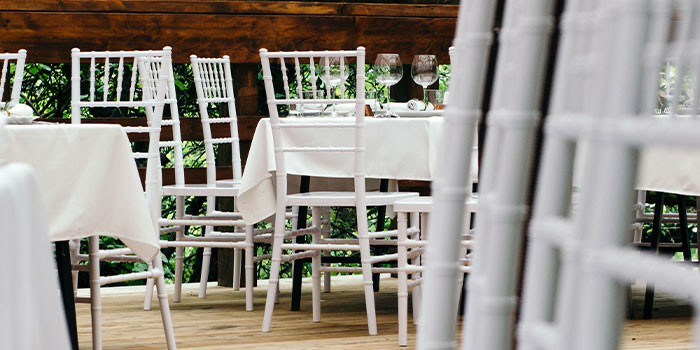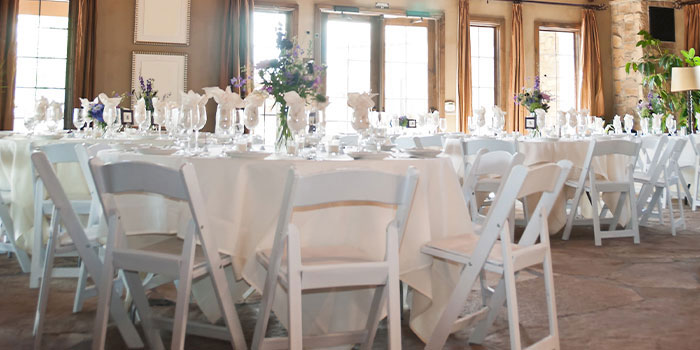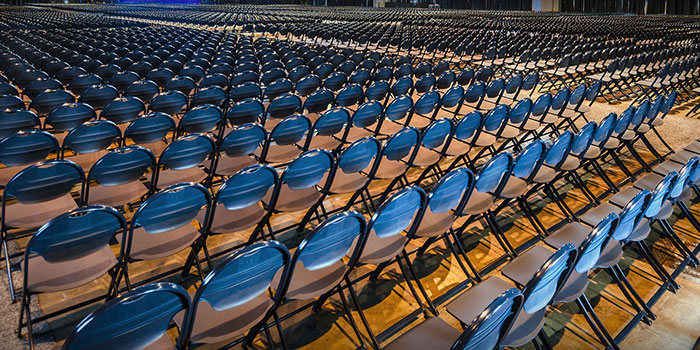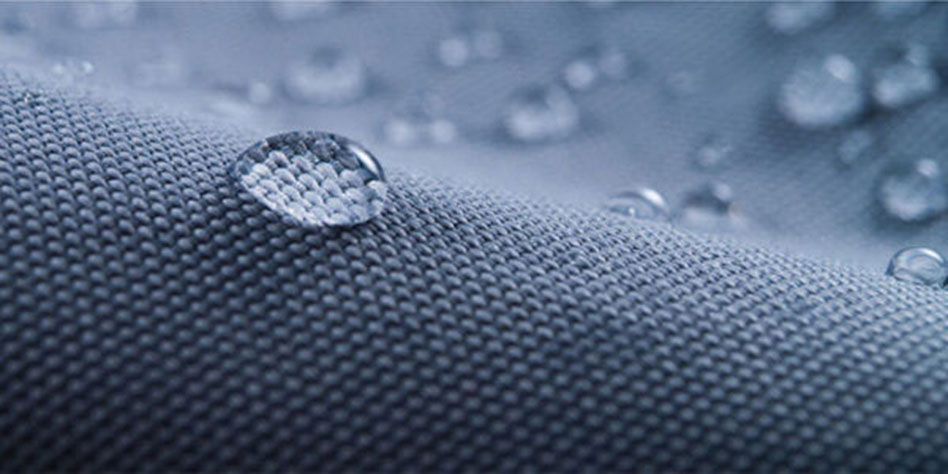
Just like the clothing you wear, chair upholstery needs to be washed. Doing some regular, light cleaning is the best way to keep your chairs looking nice.
Here you will find detailed instructions for how to clean upholstery fabric types used on MityLite chairs.
Disinfect Chair Upholstery to Prevent the Spread of Germs
Are you worried about minimizing the spread of bacteria and viruses at your events? EPA-registered desinfetantes that meet the criteria for use against SARS can also be used to sanitize fabric and prevent the spread of the coronavirus and other contagious illnesses.
The Centers for Disease Control recommends using the following products to sanitize chairs and tables in public areas.
- Asepticare™
- Alvejante 1:10 (alvejante 10%)
- Spray desinfetante Bleach-Rite®
- CaviCide®
- CaviCide1™
- Limpador germicida Clorox® Healthcare Bleach
- Spray desinfetante limpador de peróxido de hidrogênio Clorox®
- Limpador desinfetante esporicida Diversey™ Avert®
- Limpador multisuperfícies Clean & Fresh da Lysol
- Oxivir® 1 UTR
- Oxivir®TB
- Limpador desinfetante diário OxyCide™
- Virex II 256
How to Clean Olefin Fabric (including Sherpa & Shire Fabrics)
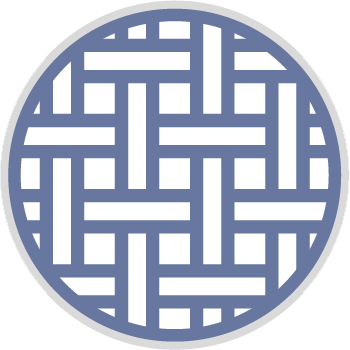
Para estofados Sherpa e Shire (e outros tecidos de olefina 100%), recomenda-se o seguinte tratamento de desinfecção para desinfetar contra germes e vírus, mesmo contra o coronavírus (COVID-19).
Use um alvejante doméstico (que inclui 5.25% ou 6.00% – 6.15% hipoclorito de sódio depending on the manufacturer label) diluted in water at a Proporção de diluição 1:10, which is 1,5 xícaras de água sanitária em 1 galão de água. The use of bleach on Sherpa and Shire olefin fabric will not have a harmful effect and the recommended treatments will not void the warranty. However, it is still recommended to test the cleaning solution in an inconspicuous area first before using it throughout.
Prepare the solution fresh before each use, as bleach is sensitive to light. Also, note that bleach expires one year after production, and it can lose efficacy if not stored properly.
Remove organic soil and bulk spill matter prior to disinfecting. Disinfection requires a recommended wet contact time of 10 minutos para ser efetivo. Lembre-se de que as soluções de cloro são corrosivas e podem corroer o metal e danificar a pele.
Nunca misture água sanitária com qualquer produto que contenha amônia ou ácidos.
How to Clean 100% Polyester Upholstery & Polyester Blends
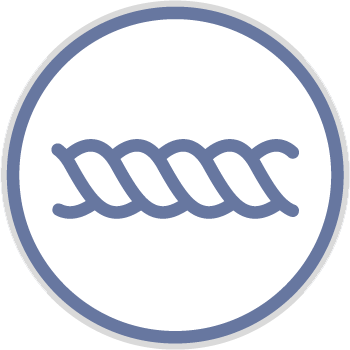
When cleaning upholstery that is manufactured with 100% polyester or polyester blends, it’s best to use hydrogen peroxide products.
We recommend using something like Clorox® Hydrogen Peroxide Cleaner & Disinfectant. This product, which is available as both a spray (for fabrics) and a wipe (for hard surfaces), will kill pathogens on both hard and soft surfaces and can eliminate bacteria and viruses in 30 seconds. This industrial-grade cleaner can be applied to a variety of fabrics, including those that are 100% polyester. This cleaner has no volatile organic compounds (VOCs), harsh fumes, bleach, or added fragrance, and the active ingredient, hydrogen peroxide, breaks down into water and oxygen upon use. No entanto, ainda é recomendável testar primeiro a solução de limpeza em uma área pequena e imperceptível.
Esteja ciente de que os tecidos de poliéster e mistura de poliéster são sensíveis aos efeitos do alvejante. A Solução de alvejante 3% (1/3 xícara de alvejante para 1 galão de água) is the highest concentration that can be used, but it cannot be guaranteed that long-term use of a bleach solution will not pose a problem.
Another recommended product for cleaning upholstery is Lysol® Clean & Fresh Multi-Surface Cleaner, which is also EPA-registered for its virus-fighting abilities and kills 99.9% of viruses and bacteria. However, the active ingredient, cloreto de alquil dimetil benzil amônio, tem sido implicado em vários efeitos adversos à saúde, portanto, evite contato com a pele, inalação ou ingestão acidental.
Tal como acontece com todos os produtos de limpeza potentes, mantenha longe do alcance das crianças, aplique apenas em áreas bem ventiladas e lave as superfícies com água limpa após o uso.
How to Clean Crypton & Nanotex Fabric
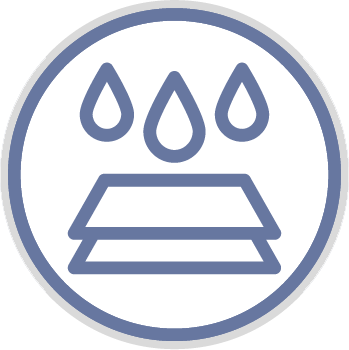
Nanotex and Crypton fabrics are multi-tiered materials with antimicrobial and stain-resistant technology and an integrated, permanent liquid barrier. Crypton’s patented moisture barrier is proven to prevent solids and liquids from permeating to the cushion below. This makes Crypton fabric one of the easiest upholstery fabrics to clean.
However, it is possible for a surface to appear clean but not be disinfected. Crypton recommends using their EPA-approved Disinfectant & Deodorizer on Crypton Barrier Fabrics. This formula is engineered for high-use, high-abuse settings. This is a one-step disinfectant cleaner that is effective against a broad spectrum of bacteria, viruses, mold, mildew, and fungus.
Best of all, this disinfectant is effective in preventing the spread of bacteria and viruses.
Para desinfetar e limpar completamente o tecido, siga as seguintes etapas:
- Remove spills with an absorbent cloth or paper towel. If necessary, clean heavily soiled areas with soap and water.
- Remove excess moisture and soap via vacuum or by wiping with a clean, dry cloth. Remove all soap so that it does not attract soil.
- Teste o Desinfetante e desodorizante Crypton in a small, inconspicuous area.
- Aplicar Desinfetante e desodorizante da Crypton by holding it 6-8 inches from surface. Do not inhale fumes from the spray.
- Rinse the fabric with water after application.
- Allow the surface to remain wet for 10 minutes.
- After 10 minutes, wipe dry or allow to air dry.
How to Clean Woven & Coated Polyester Fabrics
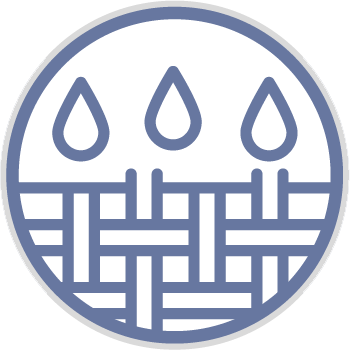
Para manutenção geral de tecidos de poliéster tecidos e revestidos, aspire regularmente as superfícies para remover toda a poeira e partículas soltas, limpe qualquer sujeira ou manchas e desinfete regularmente.
Para desinfetar, primeiro confirme se é seguro usar água sanitária em seu produto, testando uma pequena área em um local imperceptível. Misture uma solução de água sanitária e água limpa com um proporção de 1:10. Proteja e cubra a estrutura do móvel e as áreas adjacentes e trabalhe em área bem ventilada com luvas e proteção para os olhos.
After disinfecting the upholstery, rinse it well multiple times with clean water. Any bleach left on the fabric may degrade or shorten the lifespan of the fabric.
How to Clean Woven & Knit Fabrics

The following list of suggested cleaners can be used to disinfect woven and knit fabrics and prevent the spread of viruses, bacteria, and other contagious illnesses. Note that these cleaning products have not been rigorously tested against all fabric types and styles, so the information that follows should be regarded as general suggestions rather than recommendations. Always test the cleaning solution first on a small, inconspicuous area.
- Spray desinfetante Lysol
- Toalhetes à base de peróxido (várias marcas)
- Toalhetes com álcool com ou sem desinfetante quaternário (várias marcas)
Instruções de desinfecção:
Molhe levemente o tecido e deixe-o secar ao ar. Observe que, ao usar lenços umedecidos, se a cor for transferida para o lenço, o tecido não terá cor firme no produto e esses lenços não devem ser usados. Evite o uso de lenços à base de alvejante, a menos que o tecido seja resistente ao alvejante. Se desconhecido, presuma que o tecido não é seguro para alvejantes.
Desinfecção em ambientes de saúde:
A maioria dos desinfetantes hospitalares destina-se ao uso em superfícies duras e geralmente não são apropriados para tecidos ou malhas. No entanto, foram realizados testes limitados com os seguintes produtos de limpeza e eles não parecem afetar a cor ou a integridade do tecido. Siga cuidadosamente as instruções do rótulo, especialmente em relação à diluição do desinfetante.
- Virex II 256
- Oxivir TB
- Toalhetes germicidas de pano Super Sani
- Toalhetes Cavicide e Cavicide
Instructions for disinfecting in healthcare environments:
Lightly wet the fabric surface and allow it to dry—do not saturate the fabric. If repeated applications are anticipated, rinse with clear water to prevent the buildup of chemical residue on the fabric.
How to Clean Polyurethane Upholstery
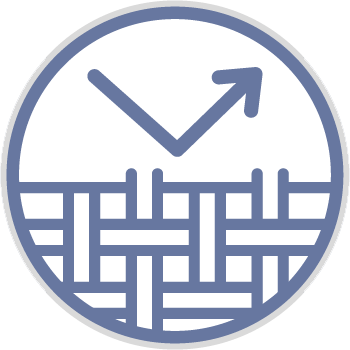
Para manutenção geral de tecidos de poliuretano, aspire regularmente as superfícies para remover toda a poeira e partículas soltas, limpe qualquer sujeira ou manchas e desinfete.
Trate as manchas o mais rápido possível. Será cada vez mais difícil remover uma mancha quanto mais tempo ela durar. Remova substâncias sólidas ou semissólidas usando um objeto plano. Remova o máximo possível da mancha e aspire bem usando os acessórios adequados antes de limpar com um agente.
Pre-test any cleaning method or disinfecting agent in a small, hidden, inconspicuous area to ensure it won’t damage the fabric. We recommend using several less concentrated applications of cleaning solutions rather than one concentrated application because that will be less likely to damage the fabric. You should also protect and cover the furniture framework along with surrounding areas, and work in a well-ventilated area with gloves and eye protection.
Evite permitir que fluidos de limpeza penetrem na superfície do tecido. Remova os fluidos imediatamente enxugando com um pano limpo, absorvente e de cor firme.
Remova as manchas usando uma escova macia ou esponja e aplique água morna com sabão na mancha. Do not over-wet as this may leave a ring and soak up any remaining cleaning solution. Use movimentos leves e rápidos, começando do lado de fora da mancha e trabalhando em direção ao centro. Evite esfregar ou esfregar a área, pois isso pode danificar o tecido. Use um pano limpo e água fria para remover qualquer resíduo.
Allow fabric to dry thoroughly and do not use heat, as that will set the stain into the fabric. As with woven and knit fabrics, rinse well after applying bleach to avoid degrading the fabric.
How to Clean Vinyl (PVC) Upholstery

To disinfect PVC (polyvinyl chloride) vinyl upholstery, we recommend using these EPA-approved solutions which have been shown to sanitize against COVID-19 and other strains of the coronavirus.
- Uma solução de Alvejante 10% misturado com Água limpa 90%
- Panos Super Sani
- Virex™ II, 256
Sempre teste previamente qualquer método ou agente de limpeza em uma área pequena, escondida e imperceptível para garantir que não danificará o tecido.
Note that cleaners and disinfectants should be used in recommended dilutions and never in a concentrated form. Make sure to wipe off disinfectants with clean water and then dry the vinyl with a clean towel to remove any chemical residue that could discolor or degrade the material’s surface.
When Upholstery Cleaning Isn’t Enough
If your event chairs have started to show their age and cleaning and disinfecting aren’t doing the trick anymore, perhaps it’s time to upgrade or replace them. Browse MityLite’s catalog of durable cadeiras estofadas para banquetes.

Upgrade your space with new furniture. Contato a sales rep today!
